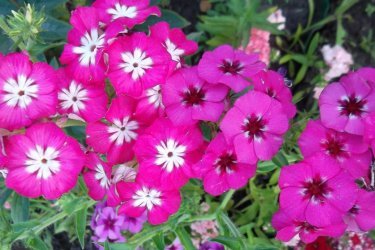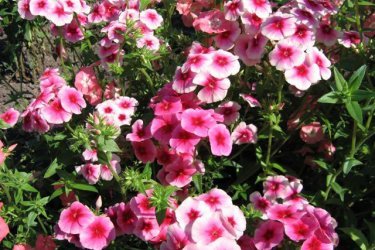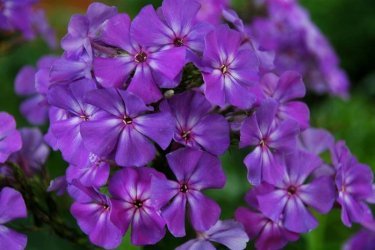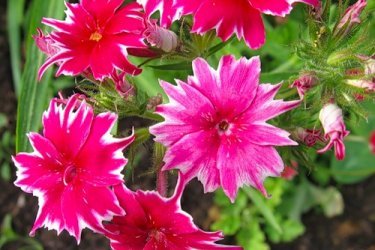Phloxes
Fragrant, with a sweet aroma that fills the entire space, they delight our eyes with long-lasting bright flowering. Of course we are talking about phlox, about the most favorite and common colors that look great in garden design.
Did you know that they began to be grown in Russia about a century and a half ago, and three hundred years ago they could only be found in North America. The first Russian name is sitchik; small bright flowers were associated with traditional painting on fabric.
Good omens are associated with sitchiki; a bouquet of these flowers is given as a sign of reconciliation and agreement.
Varieties, perennial and annual phloxes
All representatives of this species can be divided into:
- spring-flowering, which include ground cover plants with unusually abundant and bright flowering, often used in the design of landscape gardens
- summer-flowering, numbering about 400 varieties, delighting with flowers from June to October, the most popular is garden paniculata
- annuals, represented by Drummond phlox
Flowering, depending on the variety, lasts from 30 to 40 days. And the fine-needle exclusive fillings break all records - they bloom for more than 90 days. This unusual variety is also frost-resistant and is not afraid of either heat or inclement weather.
Growing phlox in open ground
These plants are not that capricious, but they require attention and awareness of their nature. Those who fail to organize optimal conditions for growth, are unlikely to be able to admire the flowers to the fullest.
Let's clarify which moments in their lives are very important.
Choosing a location: the most comfortable area will be a well-lit area with loose soil with a normal or slightly acidic reaction.
Preparing the soil for planting perennial phlox:
- the soil should be enriched with humus, compost, ash, complex mineral fertilizers
- It is necessary to cultivate the soil to a depth of 35-40 cm, the roots of the plant are located deep
- Bushes can be planted in early spring or in August-September; when replanting in summer, you will need to remove all inflorescences
Plants planted in autumn bloom actively in summer.
Growing Phlox perennial can be carried out for a long time in one area, but subject to systematic application of fertilizers. The emphasis should be on nitrogen-containing complexes. But we must not forget that even the best and most useful things should be in moderation.
Phlox should be watered as the soil dries, sparing no water - the plants are moisture-loving.
To reduce moisture evaporation and better preserve the roots, it is recommended to mulch the soil.
With the onset of frost, the bushes are pruned; to prevent freezing in a snowless winter, shelters are provided or the soil around them is well mulched. Perennial phlox can be propagated by seeds, cuttings, or dividing the bush.
You can get more detailed information on all issues of care and reproduction by reading the articles in this section.

Read more

Read more






